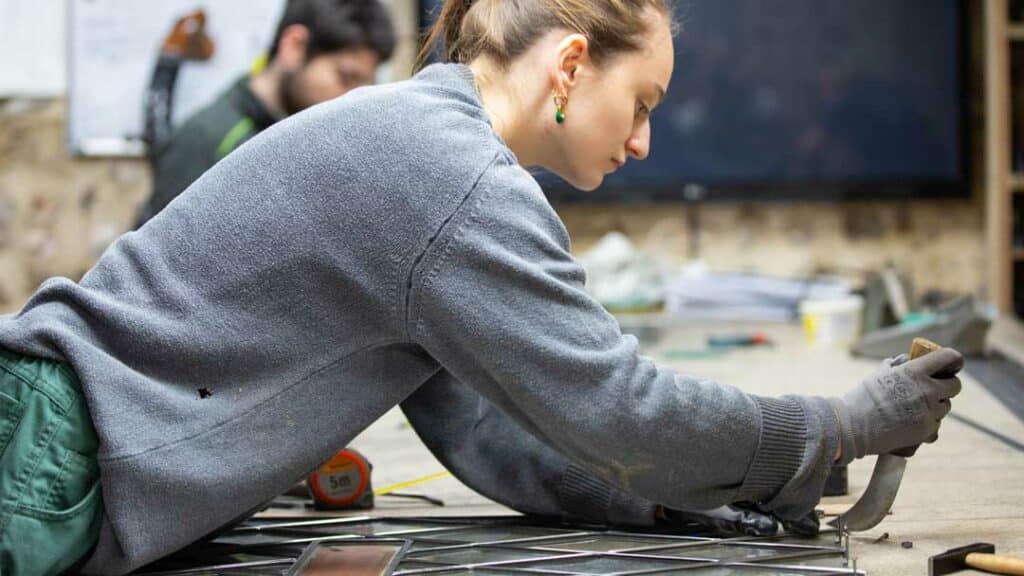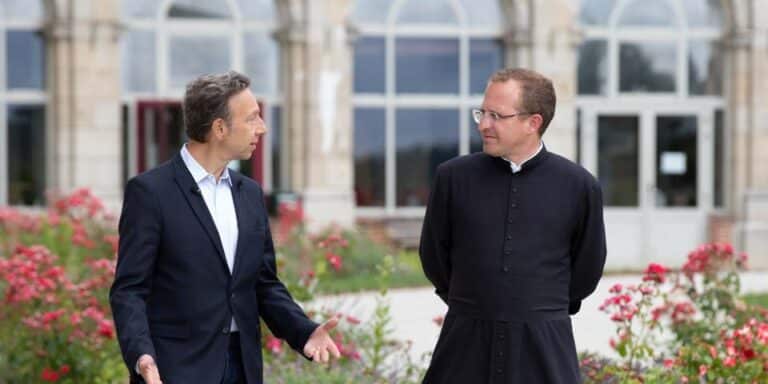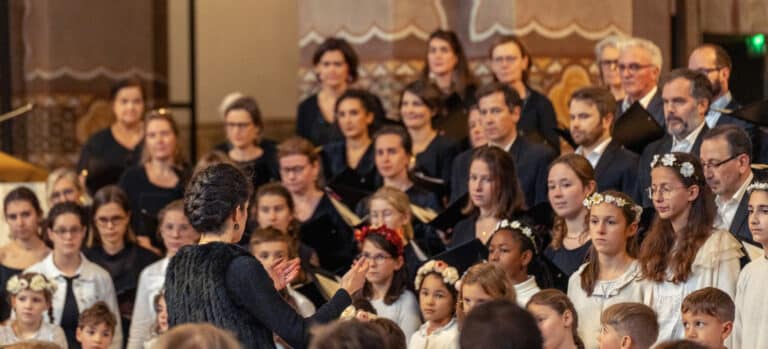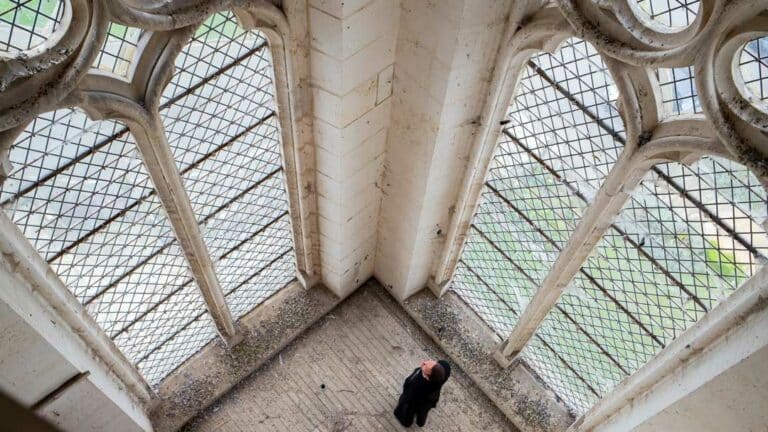On 9th October 2025, we were off to meet the stained glass glaziers to immerse in the workshop of Ateliers Gouty, in the Normand town of Cormeilles (Eure). There the renovation of the stained-glass windows of the basilica has started, involving a number of processes: cleaning, unsetting, glass cutting, re-caming, glass painting, etc.
The transmission of a centuries-long know-how can be witnessed there. Gabrielle, Roxane, Ivanhoé, Isabelle and Dimitri list the various steps: outlining, tracing, cutting, setting, baking of grisailles and silver stain. The curriculum of the craftsmen and women is also revealed, how their were trained, how their passion got patiently matured, as well the technical choices ensuring the stability and readability of the glass-works over time. This renovation is part of the mission of the Shrine – maintaining the beauty of this heritage that serves both prayer and the memory of the deceased.You can learn more about the restoration steps at: https://www.ateliergouty.com/les-etapes-de-restauration-procede/
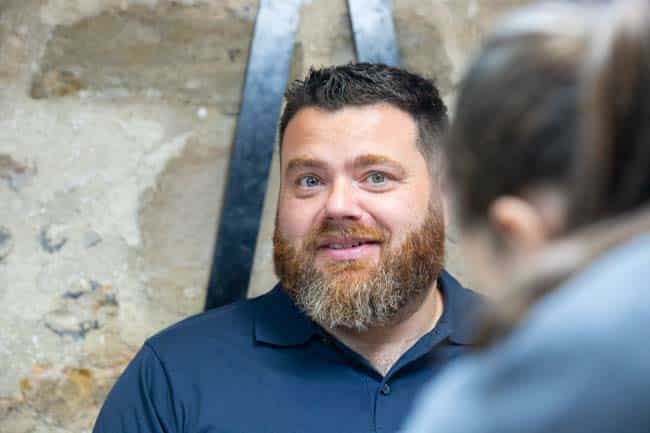
Why restore old stained-glass windows?
Over time, lead tires. The glass panels get distorted, the welds weaken, the putty alters. The environment also plays a part, with dust, salts, condensation, superficial corrosion and micro-cracks adding to the whole frailness. This results in scenes loosing their readability and the structure of the panel creating tensions. Restoring primarily means stabilizing, that is, recovering the flatness, reinforcing the mountings and protecting the glass pieces. It also means regaining readability, by cleaning any grime deposit, rehashing flaked paints and making sure that the taints are consistent. Lastly, it means preserving, by providing adequate protective measures whilst documenting every step. In this way, we respect the original material, we limit the number of pieces to be replaced and we ensure the transmission of this heritage to the generations that will come to pray here in the future.

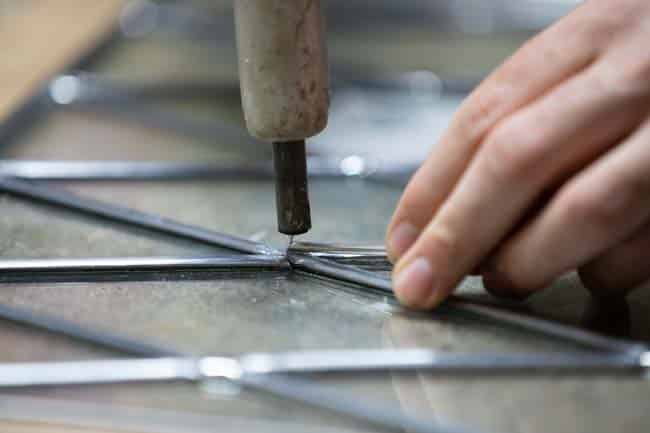
The key stages in stained glass restoration
The method follows a proven path. First, a survey, tracing and photos capture the original state. Next, each piece of glass is unset and cleaned. We check the cuts, replace any damaged or broken fragments with identical ones, and reinforce those that are able to sustain it. Then comes the process of re-leading, welding and sealing.
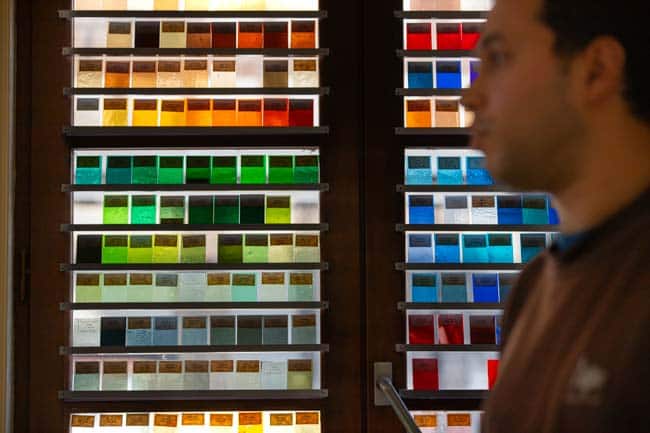
The painting on glass (called ‘grisaille‘) and the silver taint are baked in an oven, if required, in order to bring about the lines, the shadows and the enhancing brush strokes. Finally, the panels are put back in place, along with their adapted protections and drainage. These processes extend the craft’s tradition, much like in the art of ‘cloisonné‘, where colored pieces are linked by a network of lead designed as an element of the artwork itself. Thus, the technique serves the catechesis through image and the beauty of light.
Find out more about stained glass techniques at
https://www.britannica.com/art/stained-glass/Traditional-techniques
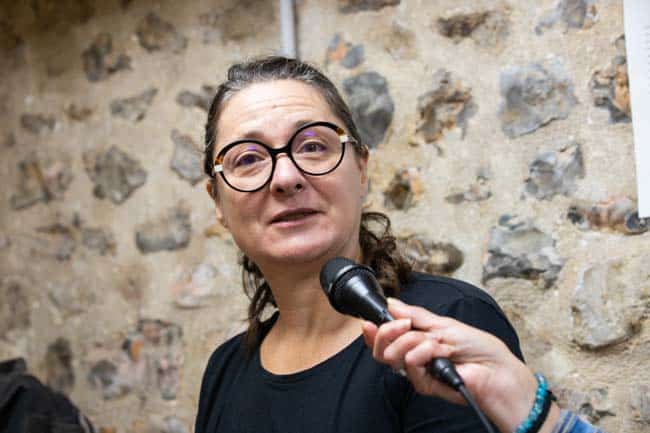
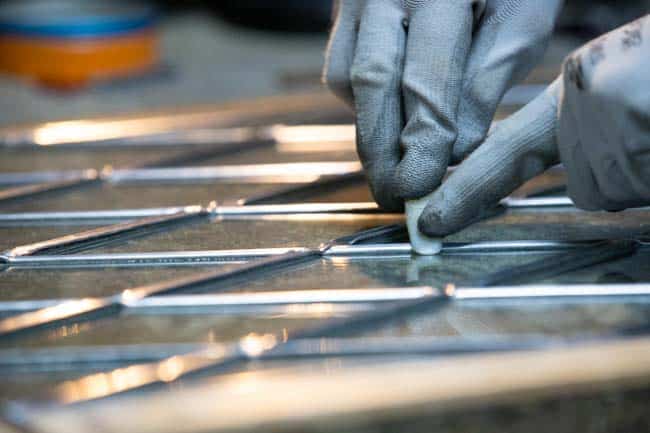
The art of sculpting light, a short history of stained-glass
Glass staining emerges as an art of light handling. It consists in assembling pieces of glass set in lead to tell the Gospels and enhance the architecture. In Europe, its most glorious era spans from 12th to 14th centuries, with large Gothic glass-works. A stained glass window is called glazed work when its pattern is geometrical and repetitive, for instance with diamond shapes (or ‘quarries’) or bollards, as those you can see on the glazing of the towers of Notre-Dame de Montligeon. Glazed panels are typically clear and unpainted. Grisaille was developed in the 13th century, to gain more clarity. Then the silver stain technique emerged in the 14th century. As Dimitri explains, because it is applied and “baked”, it “dyes” the translucent glass with golden shades, enriching the compositions. This intervention, which appeared in France as early as 1313 (at Le Mesnil-Vileman, Manche) is a key milestone. Then, the traditional techniques — cutting, setting, painting with grisaille, baking — remain the basic terminology up until today. Restoring a stained glass window then amounts to serving a history and a technique, as well as a theology of light.
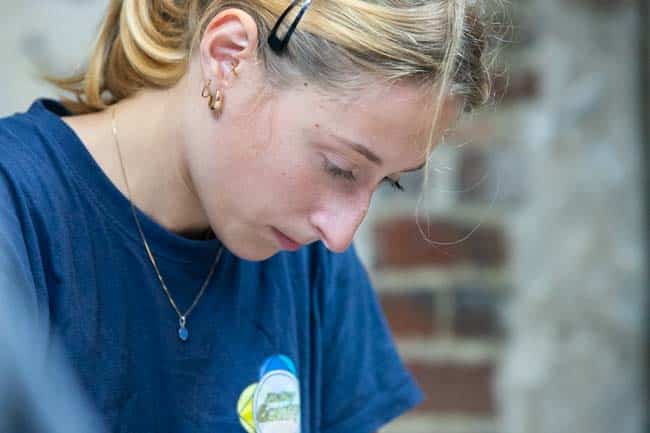
In 2025, this work is being reproduced identically to Louis Barillet’s work from 1925, but the glazing panels are modified in order to add some donors’ inserts, in thanks for the donations that allowed resuming the restoration project this year.
In order to learn more about the work entrusted by Bp. Lemée to his friend Louis Barillet on the stained glass windows of the basilica Notre-Dame de Montligeon, you can get the beautiful book by Servanne Desmoulins-Hémery and Francis Bouquerel, titled “Que la lumière soit ! Le vitrail dans l’Orne“. Page 94 is all about the Redemption panel of the basilica. Available at the Shrine’s shop.

Que la lumière soit ! Le vitrail dans l’Orne, published by La Mésange Bleue – May 2024
https://infovitrail.com/publications.php/fr/d/-que-la-lumiere-soit-/c6984313-1e51-4176-91cc-7e7952021bd7
A moving discovery: the 1925 signatures of the artisans from Louis Barillet’s workshop
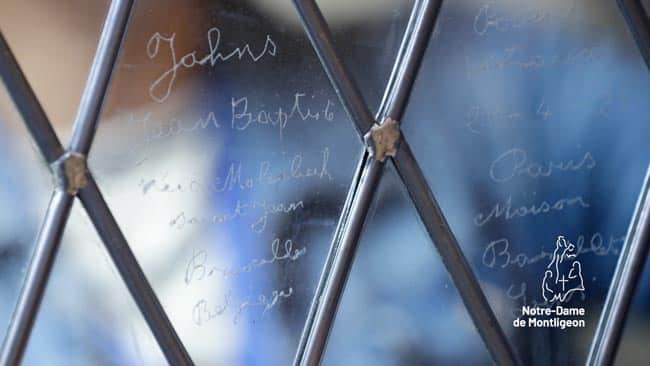
When the first panels were dismantled, the Atelier Gouty team was in for a surprise. After unscrewing and cleaning the forty stained-glass windows in the north tower, quarry after quarry, inscriptions appeared. “We’ve discovered a treasure trove,” confides Cyril. The former glass-fitters had left behind signed pieces and workshop markings, veritable witnesses to the designs produced at the time. One of the quarries bears the inscription left by the Belgian glass-fitter, “Johns Jean Baptiste, né à Molenbeek-Saint-Jean – Belgique”, with the date of fitting, “21-04-1925″.”And we’re restoring it exactly one hundred years later,” marvels Cyril. These elements refer to Louis Barillet’s workshop, a renowned Paris-based manufacturer who also worked on the transept and choir windows of the basilica. “It’s rare to see such a testimony, engraved with a diamond tip, bearing the date and meaning,” he adds. In turn, the teams at Atelier Gouty want to leave their own mark for the future: “Signing the restoration in 2025, for the next ones, in 2125.” In this way, the chain of craftsmanship continues, from hand to hand, in the light.
Louis Barillet, born in Alençon in February 1880, is one of the leaders of the renewal of modern stained-glass window art in France. After attending the école des Beaux-Arts in Paris, he joined the Groupe des Artisans de l’Auteul in 1919, a company of Christian artists. There he met Jacques Le Chevallier and the Belgian Théodore Hanssen, his fellow associates in the workshop he created in 1920 (source : Que la lumière soit, le vitrail dans l’Orne, page 82). This explains why the signature of Belgian workers can be seen at the La Chapelle-Montligeon project.
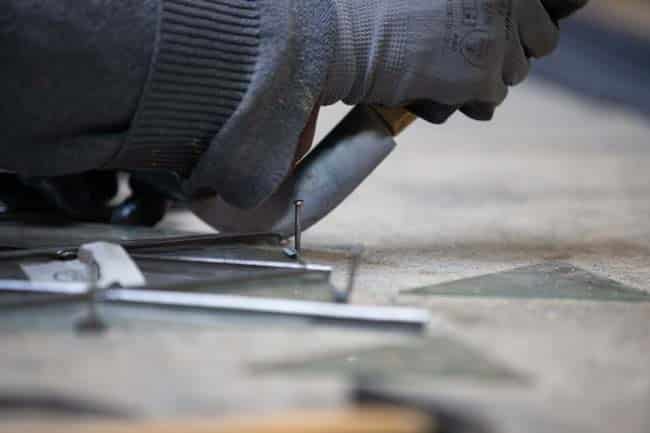
A heritage at the service of prayer
In Montligeon, beauty is no luxury. It supports prayer and the memory of the deceased. Restoring stained-glass windows means offering the pilgrims an environment worthy of entrusting their loved-ones to the Lord. Moreover, this project is a part of our mission, i.e the transmission of hope. Of course, you can take part in it. Your support allows the mission of praying of the deceased to continue and to bear your intentions. Join our donors, request an intention for a Mass or join a prayer group for the deceased in the Fraternity Notre-Dame de Montligeon. Thus you will play a concrete part in the transmission of a living heritage and in the consolation of many hearts. Thank you for your faithful support.
An endangered basilica
Project presentation (PDF download):
2022-04-12-Montligeon-Batisseurs-Esperance-Ambassadors

